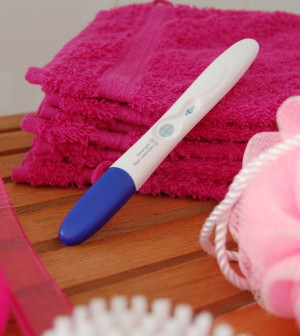- Navigating Your Midlife Crisis: Embracing New Possibilities
- City Raccoons Showing Signs of Domestication
- Mapping the Exposome: Science Broadens Focus to Environmental Disease Triggers
- One Week Less on Social Media Linked to Better Mental Health
- Your Brain Changes in Stages as You Age, Study Finds
- Some Suicide Victims Show No Typical Warning Signs, Study Finds
- ByHeart Formula Faces Lawsuits After Babies Sickened With Botulism
- Switch to Vegan Diet Could Cut Your Greenhouse Gas Emissions in Half
- Regular Bedtime Does Wonders for Blood Pressure
- Dining Alone Could Mean Worse Nutrition for Seniors
Cost a Barrier to Healthier Diets for Diabetic Kids, Study Shows


Higher cost is one reason it is difficult for many parents of children with type 1 diabetes to provide their youngsters with a healthy diet, a small study finds.
The study included 23 families in northeastern Kansas and western Missouri with children between the ages of 1 and 6 who had been diagnosed with type 1 diabetes at least six months earlier and were on an intensive insulin regimen.
Patients with type 1 diabetes often need to change their eating habits, but many children with the disease do not have healthy diets, according to the authors of the study published July 8 in the Journal of Nutrition Education and Behavior.
The researchers compared the lowest non-sale prices for 164 food items on the U.S. Department of Agriculture’s Thrifty Food Plan (R-TFP) and a healthier version of the plan (H-TFP).
The results showed that a healthier market basket costs about 18 percent more than the standard basket. “Moreover, families can face barriers in finding specific healthier foods at their local stores,” study author Susana Patton, of the department of pediatrics at University of Kansas Medical Center, said in a journal news release.
The average cost for the 164 items on the R-TFP was $324.71, compared with $380.07 for the H-TFP, a difference of more than $55. Proteins and grains had the largest differences in costs.
The researchers also found that small and independent food stores carried fewer healthy items than chain and big box stores.
The study authors suggested a number of ways to help ensure children with type 1 diabetes have healthy diets. Their suggestions included providing parents with recipes, teaching them to use lower-cost substitutes for more expensive foods, telling them about local stores that provide a wide selection of healthy foods, and helping them understand purchases in terms of nutrition per dollar.
More information
The American Diabetes Association has more about living with type 1 diabetes.
Source: HealthDay
Copyright © 2025 HealthDay. All rights reserved.










